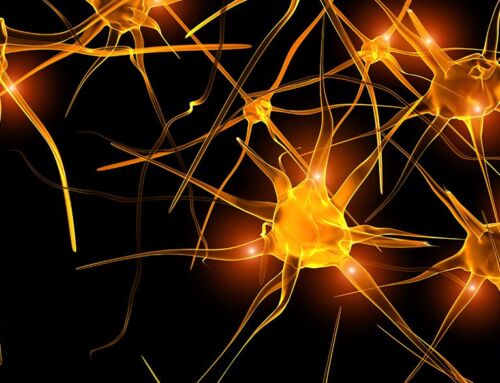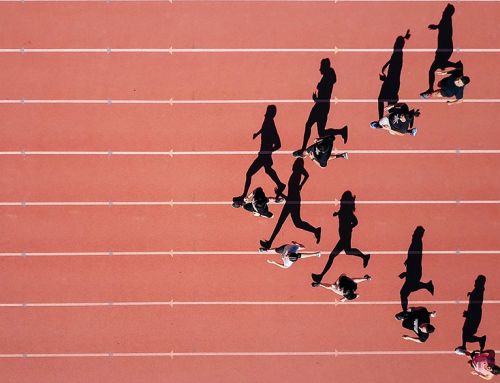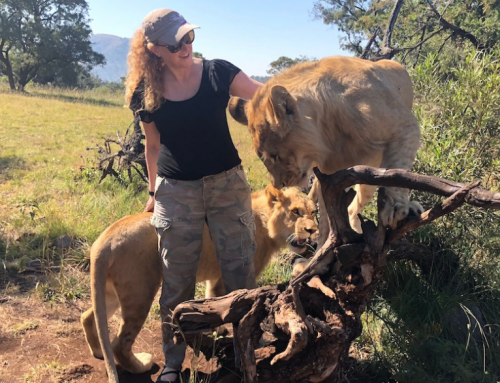Optimising Your Brain with Sue Langley
Happiness & Its Causes Keynote 2017
Sue Langley
Thank you Chris. That’s gotta be the nicest introduction, that I’m just a nice person. I’m quite happy with that. Thank you all, it’s lovely to be here with you.
I’m going to talk a little bit about optimising the brain, and I thought we’d have a little bit of fun with understanding how our brain works. Perhaps what’s going on in your head right here, right now as you sit and listen to all these fabulous speeches, talk to different people around, and just have a think about what might be going on inside.
If you think about the way the brain is wired, we know it’s filled with little neural connections. We know that we have different areas of our brain that specialise in different, specific tasks. Equally there is a lot of complexity around the brain. So, I thought what I’d do is have a little bit of fun exploring some of the main functions.
When we think about the main functions, there are different things that your brain has to do at any point in time.
It (the brain) has to be able to understand new information; learning. So new information that comes in, it has to be able to understand it. Then, it has to be able to memorise; if you want to use that information again, you’ve got to kind of keep it somewhere. Then, when you want to use it again, you’ve got to recall it.
So, it has to then work on that, how you bring it back again. And then, it has to also inhibit thought, so other things that get in the way when you’re trying to focus, it has to work on that. And it has to make decisions about what you are going to do, what you are going to eat, when you are going to show up, decisions at work. All sorts of decisions that we make all day, every day. So, we’re going to have a bit of a play with this, and we’re going to explore these five different areas and see if we can understand what’s happening in your brain over the course of today and tomorrow.
The first thing we’re going to think about is understanding new information. Now, some of you out there in the audience have a picture card. It looks like a playing card. Some of you have that. If you have one, can you hold it up? This is the interaction bit, so I’ll need to see … It’ll been sitting on one of the arms or something like that. There’s about 50 of them. Okay, wonderful. I need some, if you can hold it up for me, because it’s hard to see. Okay, I have somebody down here that I can see. Could I invite you to come up on the stage for me? Please! Come join me. Please give her a round of applause. Alright, while she’s making her way up on the stage, we’re going to set the scene. So, when we learn stuff, we are presented with new information, we’ve got to learn it. Thank you, please come join me. What’s your name?
Zoe
Zoe
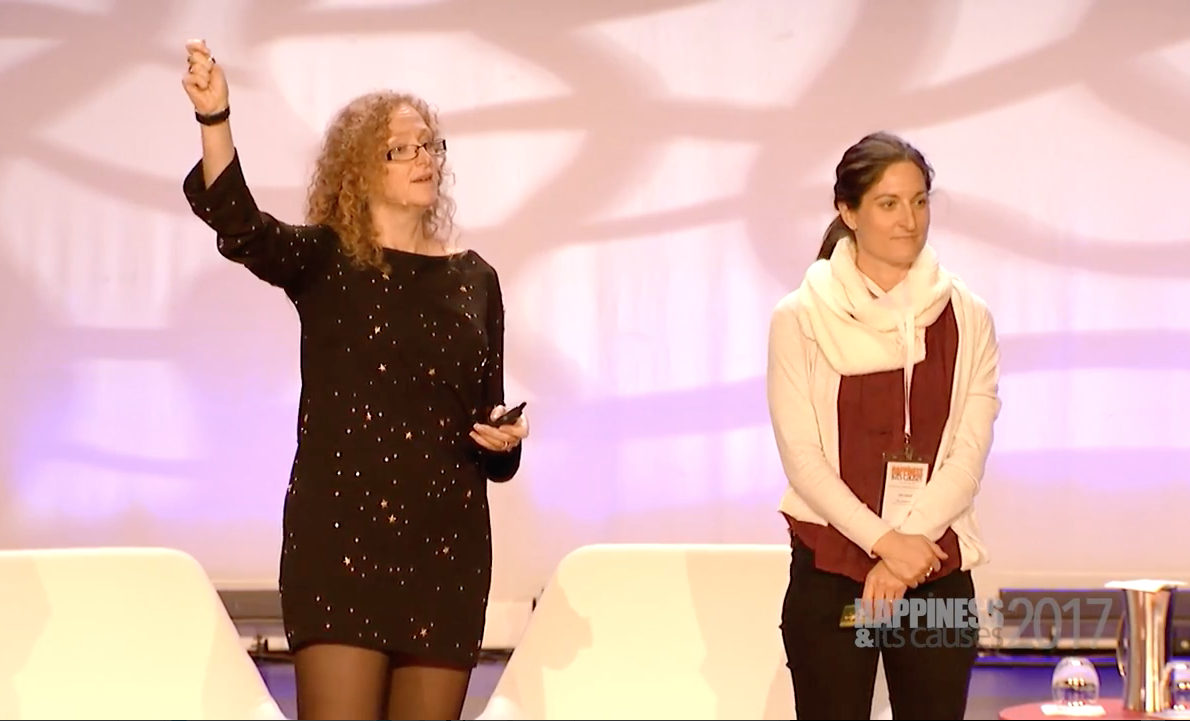
Sue Langley
Zoe, pleased to meet you Zoe. We’ve met before, haven’t we? I’ve seen you before somewhere. Okay, so Zoe, I’d like you to imagine that Zoe is a new piece of information. Apologies for taking the gender and everything out, yet she’s a new piece of information. Something new we’ve come across and we’ve just established whether we’ve read it, whether we’ve heard it, she’s this new bit of information. And at the moment, we don’t quite know what to make of this new piece of information. So, one of the things our brain does quite beautifully, is it tries to figure out what we know about this new information by linking it to what we’ve already got out there. So what’s your card, is it a spade or a club?
Zoe
Club.
Sue Langley
It’s a club. Beautiful. So, club, who here out here has a club? Brilliant. So what our brain does it goes, “Ooh! Zoe’s like this person over here or this piece of information I already know here.” Who else has got a club? “Ooh, ooh, and then, it’s like this piece of information over here, and like this piece of information over here.” So, in order to understand Zoe, what our brain quickly does is it searches out there in the audience to see what this new piece of information on the stage might already be like. And think about what that means, those of you who’ve got children, when you teach your children. When you first start teaching them about animals let’s say, you don’t just go through all of the different animals that it needs to learn that are out there in the world, you start with the simple ones, and then you say, “well, a dog is like a cat in this way and different from a cat in this way.” You start exploring how it’s the same and how it’s different. So what we want to do in order to understand Zoe, we want to connect it to other things we already know out there in our memory banks.
So, is anybody in the audience called Zoe? Oh yes! Fabulous! So when we find the perfect match, we’re all good. And obviously to start with, we can start with simple things, like is the new piece of information a particular category? So, we might put Zoe into the category; is she male or female, is she older or younger, all those sorts of things. Yet when we start getting really curious, we can actually find more nuanced links. Thank you my dear, please, I’ll let you make your way back. Thanks, Zoe.
And one of the examples I love about this is how our brain fires. So, I’m going to use one of my favorite examples for this; Game of Thrones. Always creates a bit of a ripple. Some of you will have a neural network around Game of Thrones when I said that word, that you’ll have one neuron fire, and then maybe your neural network looks something like this: television show, I think it’s got dragons in it? Does anybody have a neural network that kind of looks like that when I say Game of Thrones? Beautiful! Okay, who’s seen every episode? Okay. Beautiful. So these people, your neural network when I say Game of Thrones, you have a neuron that fires, and then everything you know about Game of Thrones that’s connected fires. So, your neural network goes something like this. “Ooh, Game of Thrones. It’s got Jon Snow in it.” And you know I’m saying Jon Snow [accent], not Jon Snow, and you know about the white walkers, and you know how to kill white walkers. And you’ve seen Cersei naked. Ooh, and you saw Jon Snow naked as well. You’ve got all of that huge neural network going on in your head. Anybody got that? Fantastic.
So, when we’re presented to a new piece of information, we try to connect it to something we already know.
And Christine kindly gave us this little clue at the end of her speeches; in order to understand new information, curiosity is essential. If you are focused on critiquing as you sit here; “I’ve heard this before”, “Oh yeah, I know this, oh yeah”, you’re not going to be able to understand and get new things from it. So, our brain needs to remain curious in order to take in new bits of information.
Okay, the second one is memorise. So, once we’ve understood this new piece of information, we kind of need to be able to memorise it. So, I’d like you to be able to imagine that you as the audience are my memory banks. This is my prefrontal cortex. You are my hippocampus, you’re my memory out there. If you think about memorise, I’ve got to get you from the stage into the audience if I want to be able to recall you later. Now the useful thing is, if I’ve only just memorised you, you’re in the front row. You’re nice and easy. You’re sitting right there, I use you all the time. You’re right there. Sometimes you’ve got memories that are right at the back. Anybody had those moments where something’s been on the tip of your tongue, and it’s almost like you’re really searching in the background. “I know it’s there.” Well, sometimes they are the memories that are a long time ago. Isn’t it interesting sometimes with your memories how although they can be placed somewhere back, and you haven’t heard from them in a long time, you haven’t seen them in a long time, suddenly they just pop into your head? At the most relaxed moments, you are walking your dog, you are in the shower, those sorts of things. Yet your memories are all in there.
The interesting thing about our memories though, is every time you recall them, they sometimes change shape. And all of a sudden, your memory of Zoe that was up here maybe turns into somebody else in five years-time. Because sometimes when we recall, things change. Yet think about this recall process. When you’re trying to recall something you maybe heard last year if you were here, or trying to recall something somebody else said, if it’s at the front of the audience if you like, it’s really easy to get up on the stage. The ones down the back, way harder. This is that tip of the tongue moment. And the funny thing is, when we think about the memorise and the recall, some of the things that can enhance your ability to learn and to memorise things includes writing it down. So those you that are sitting there, scribbling notes, good on you.
Writing things down really helps you memorise, put it into your audience so that maybe you can then recall it later.
The other wonderful thing is emotions help us memorise. They help us get things into our audience, if you like. They help us to then be able to recall it. And you’ll know this because they’re the things like when you hear two bars of a song, and that memory comes rushing down from the back of the audience to go, “Ha ha! It’s me!” Remember? You hear two bars of a song and you’re back on the dance floor, you’re dancing around your handbag. Yep. Or the waft of a smell? And all of a sudden that memory from ten years ago… I know for me truffles, every time I smell truffles I’m back in Italy. So, the memory and recall are really linked, yet sometimes if we haven’t necessarily paid attention, if we haven’t enhanced some of the things we’ve been doing, this is why sometimes some of those memories don’t even stick in the audience in the first place. And this is why we talk about savoring, and Chris has mentioned the Lindt balls that we have on our stand. We’re actually known for our savoring exercise that we do with our Lindt balls.
Because, actually, if you can attach all of your senses and your emotions to some of the activities that you do, it’s way easier to be able to memorise them. They’re stronger memories.
It’s one of the reasons why in positive psychology, when we think about being mindful, the art of noticing, paying attention to things and enhancing it through all of your senses, is really useful.
The other thing we said our brain has to do is inhibiting. So have you ever had that situation where you’re really trying to focus on something and you’ve really got stuff you’ve got to do, and you’re really trying to focus on your presentation –
Leanne Warner
[inaudible mumbling in Sue’s ear]
Sue Langley
And really trying to concentrate. You’ve got these written –
Leanne Warner
[inaudible mumbling in Sue’s ear]
Sue Langley
(To Leanne Warner)..Can you just wait?
Anybody had that? These little annoying thoughts? Where you’re really trying to focus on what you’re doing? And then these little thoughts just – (Leanne still inaudibly mumbling in Sue’s ear)
(To Leanne Warner) Okay.
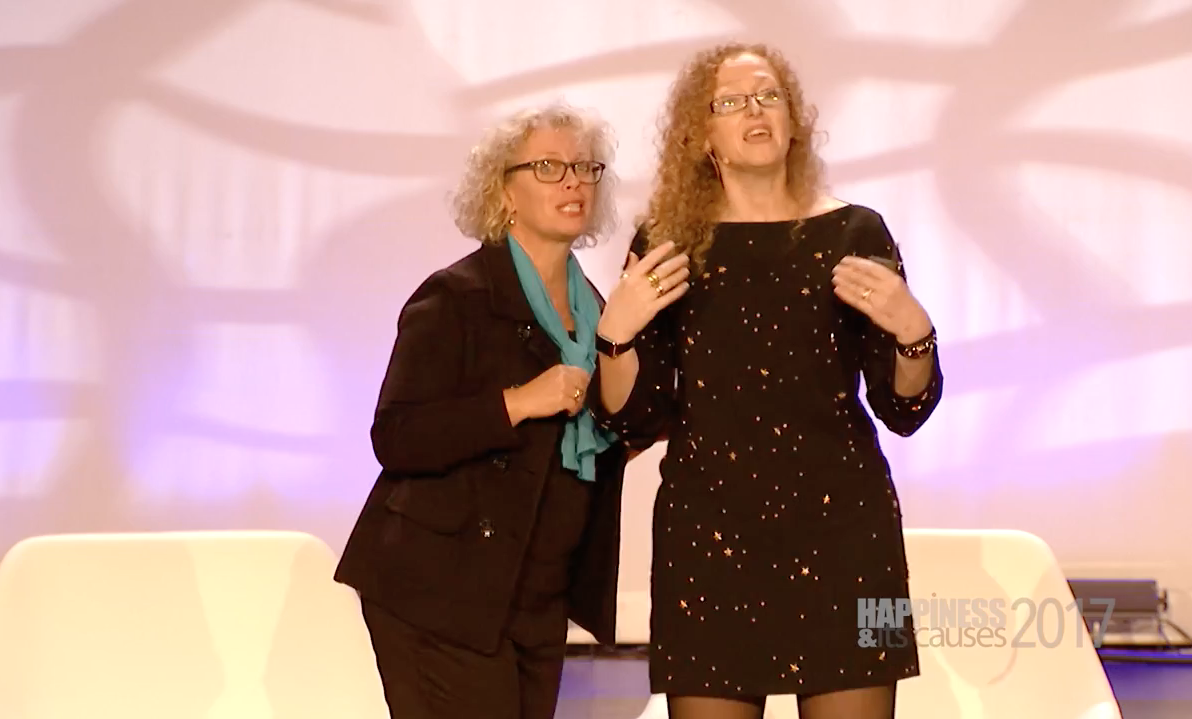
When we get those inhibiting thoughts, this is where mindfulness is really good, what we do is we push that little thought off to one side and we focus back on what it is we’re focused on. Sometimes, it’ll creep back in again. Have you had that, when you’re trying to practice mindfulness –
[00:11:03] Leanne Warner
[inaudible mumbling]
Sue Langley
(To Leanne Warner) Okay, enough. That way (points off stage).
This is why mindfulness is so useful for us, because if we practice mindfulness, we practice bringing our attention back to what we want to focus it on.
Inhibiting thoughts takes a lot of effort, and sometimes if we’re not as practiced in that mindfulness; in that focusing attention on what we want to focus it on, those little thoughts could intrude all the time. And they could be thoughts just like “Oh, it’s your mom’s birthday. You haven’t rung your mother. Oops.” All those sorts of things are what we haven’t done, what are we going to have for tea, all that. Or it can be the critiques and the doubts and the stresses that we have about ourselves. So getting practiced at being able to put those thoughts to one side when you (don’t) want them and then be able to revisit them when you need them.
The next one is decisions. Our brain needs to make decisions. And again, if we think about the neural pathways, the decisions that we make are often the ones that are easier to go down, the stronger neural pathways. So, sometimes, if you’re feeling tired and depleted, your energy is low, your dopamine levels in your head are low, so you’re not functioning as well, you might find your ability to make decisions is compromised. Anybody had those moments at work, you’ve had a stressful period, and you’re really trying to think, and you’re like, “Oh, I don’t know.” And then you make a decision, and then the next morning, you’re like, “What was I thinking?” Anybody ever had those moments? Yeah? Or your inability to make a decision after a really long day at work, and you get home, and somebody you care about says, “Oh, let’s go out for dinner, where do you want to go?” and you’re like, nah, can’t think. If you’ve had those moments, well you just almost can’t process, because you’ve got no fuel left. And the interesting thing is, from a decision-making perspective, which is essential for us in most of what we do day to day, if we are low on fuel, as in low on dopamine, our brain’s not working as effectively, your ability to make decisions will be compromised. You may not even think of the same things. You might not get all of the options that are available to you.
So again, we need to fuel up our brain in order to be able to work well. And these are some of the things that the positive psychology aspect can teach us.
The last one that I’m going to talk to you about is self-regulation. And I’ve put food up there, yet it could be anything. Your ability to self-regulate is basically your brain’s strategies that either make you do something that you’re perhaps not really wanting to do, or stop yourself doing something you really shouldn’t be doing. So, self-regulation is that moment in a meeting, when you’re in that meeting with that really annoying person, and you really want to slap them, and you’re not meant to. Self-regulation is you sitting on your hands, breathing. That’s self-regulation. Self-regulation is when you get home after a long, tiring day, and you know you’ve got stuff in the fridge, and you just go, “No, I want pizza.” Self-regulation is critical to us from a wellbeing perspective. Forcing us, if you like, to go exercise when sometimes we don’t want to. Stopping ourselves eating the things that we know we really shouldn’t eat. And unfortunately, self-regulation takes a lot of fuel, a lot of dopamine. And, the thing that’s really interesting about this is, even the thought of a reward triggers dopamine. And the interesting thing about dopamine, it’s the reward chemical, if you like. So, when you feel happy, positive emotions, whether it’s serenity, mindfulness can assist, if you think about ecstasy, all sorts of things are triggering dopamine. Exercise triggers dopamine, sleep helps with dopamine production, all sorts of things.
Yet the thing that I find really interesting, is that dopamine is this reward sensation, yet it sometimes acts before, as in, in anticipation of the reward. So, lets imagine you feel like a piece of chocolate. It’s not after you’ve eaten the piece of chocolate that the dopamine floods through and goes, “Oh, yeah, that was great,” it’s actually just before. And you know what it’s designed to do? Make you eat the chocolate. How interesting, it’s like your own personal cheer squad. And it goes, “Go on, go on! Do it! Do it!” And then of course, what happens after you’ve had one piece, your dopamine goes, “Go on! Do another one!” Has anybody had that experience? Yes. It doesn’t do it when you’re thinking, “Oh let’s go for a run, let’s go for a run.” It doesn’t suddenly go “Oh, yes! Do it!” Unless of course you really like running.
What we want to be thinking about is understanding that this dopamine push that we get is actually designed to push us to action, yet sometimes that makes self-regulation much harder.
So, understanding how your brain works, and I’m not saying you shouldn’t get afternoon tea later or whatever’s out there, yet just understanding that from a self-regulation perspective, it takes a lot of fuel, a lot of effort to self-regulate. And, of course, what happens is your dopamine sometimes encourages you even before you’ve done it.
So think about how your brain is wired. Think about what’s happening to you, today. Almost notice what’s going on in your brain. Notice when you start to get tired and lethargic. Notice when you decide that you really do want that whatever it is for afternoon tea, and you can almost feel the little rush of dopamine go, “Go on, go do it!” And feel free to give in if you wish. And self-regulation is really important, yet listen to how your brain is working today as you listen to the speeches, to the questions, to the comments. When you go around the wellness show, be curious, explore. Allow your brain to be the best it can possibly be. So, I hope you find some interesting ways to optimise your brain today. I hope it’s been a little bit of fun, a little bit of interest. If you have got one of those cards with you, hang onto that, because there’s an activity on the back of it. That’s your job between now and the end of the day. It’s a positive psychology activity, and I wish you luck with it. I hope you’ll come and see me at the stand, and I’ll see you very soon. Thank you.
Download your free eBook on ’10 Brain Friendly Habits’, to learn the most brain-friendly habits you can apply to boost your happiness and wellbeing.

